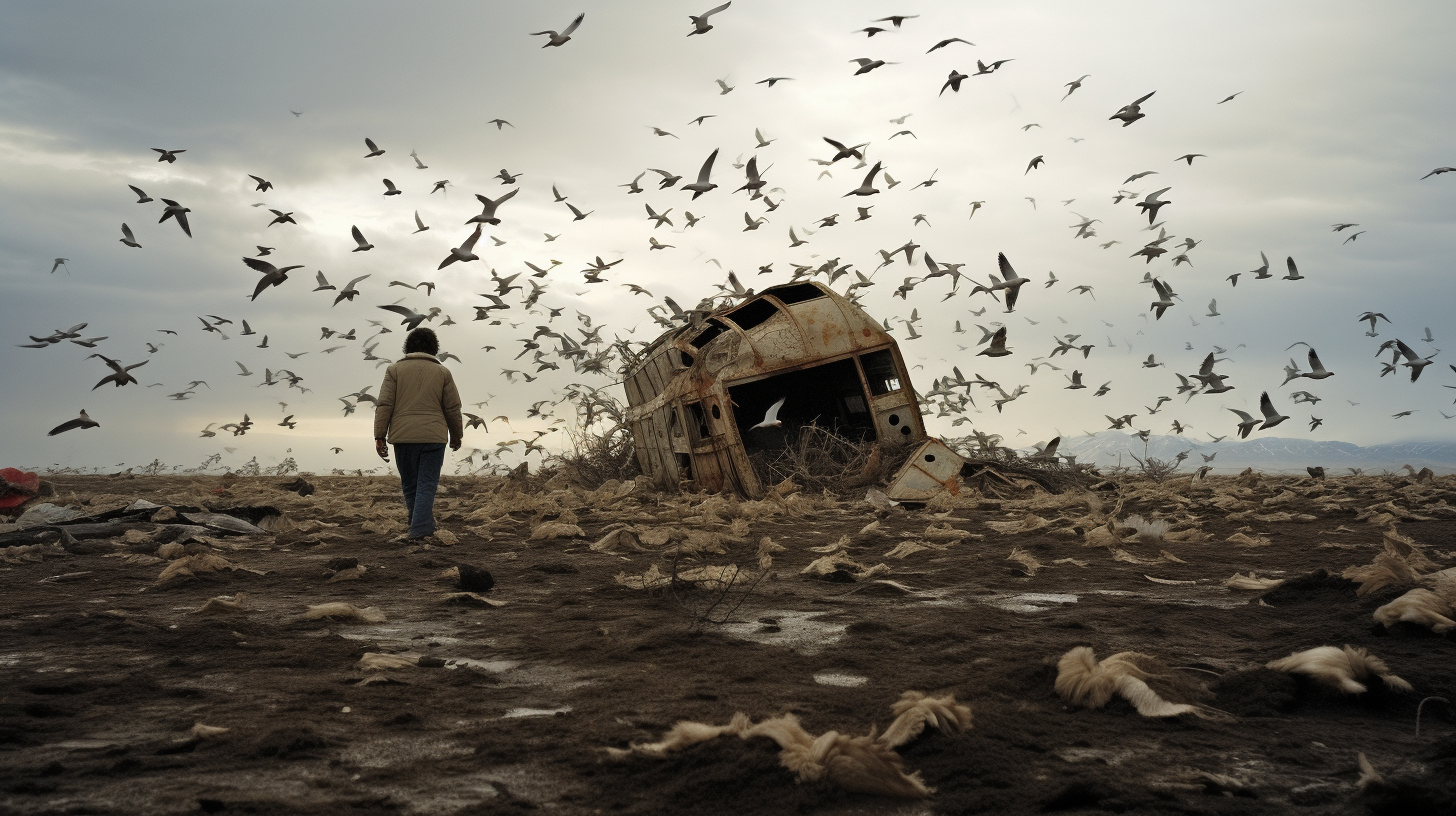Skies once embroidered with the myriad flutters and chatters, now hang heavy with silence. The horizon, a canvas that bore the kinetic artistry of winged creatures, now exhibits the stillness of an abandoned stage. ‘The Last Flight: Searching for the Final Refuge of Birds’, takes readers on a stark journey through the deserted heavens, where the few surviving avian species flutter on the fringes of total extinction.
Through the lens of beaten binoculars, we attempt the odyssey of tracking down the final strongholds of our planet’s birds. What remains of avifauna is now an echo, a hint of movement within the greying forests and swamplands barely resisting industrial encroachment. Our search is mired in poignancy and desperation, for this may well be the closing chapter of an evolutionary marvel dating back to the Mesozoic era.
What has transpired to leave the skies so barren? Catastrophes both silent and explosive—deforestation, climate upheaval, pollution, and humanity’s insatiable expansion—have all contributed their verses to this morbid requiem. Beauty, biodiversity, and the intrinsic value of life have been sacrificed at the altar of supposed progress.
The shadows of the colossal albatross no longer glide over the oceans, a sight described in ‘The Cry of the Last Albatross’. Instead, vast blue expanses witness the wraith-like specters of plastic and the lingering sorrow of vanishing biodiversity. Meanwhile, the melodious quintessence of natural harmony, once radiated by songbirds as depicted in ‘The Solitude of Skies: Last of the Songbirds’, is all but silenced in a world that has turned its back on nature’s concertos.
In this exploration, we encounter the disparate sanctuaries where conservationists have mounted a final stand. Success stories are scarce, but their rarity only magnifies their preciousness. Avian enthusiasts hold on to fleeting moments with birds that dot the global map like living jewels — perching atop the twisted branches of resilience. But these are mere whispers against the cacophony of loss. In sanctuaries and reservations — islands within islands — the last guardians of our feathered brethren toil away.
One such sanctuary, nestled between mangled roots of a disappearing mangrove, a haven for the last flock of roseate spoonbills, radiates chlorophyll-tinged hope. Yet, beneath this semblance of vigor, there lies a solemn acceptance that we are likely documenting not the resurgence, but the end-game of a world that has forsaken the skies.
Reflecting on these dwindling refuges, we must ask: have we rendered the Earth devoid not only of avian marvels but also of human empathy? The article presents an unintended allegory, portraying the sky as the barometer of our moral compass — perhaps shattered beyond repair. It stands not just as a testament to the dire state of our environmental affairs, but also as a chronicle of human disconnection from the natural world, a sobering narrative that speaks volumes of our collective estrangement.
Yet still, through spiraling thermal drafting air, a few resilient wings beat against the tempest of their fate. It is here, amidst this chaos of decay and neglect, that the article questions the permanence of this dystopia. Is it naïve to yearn for a Renaissance of feathers in the sky?
In this funeral dirge sung by empty branches and muffled winds, our journey into the remnants of a once-vibrant aviary kingdom is, in essence, a search for contrition. We delve into not only the ecological but the profound existential implications of a mundane world, one that has lost the enigma of flight and the spiritual elevation it once granted us.
The interrogation concludes where it began, under the vast and indifferent sky, pondering the last flight of these retreating shadows, questioning what their disappearance signifies for the soul of our world. In the silence of the skies, we finally learn — the death of the earth’s chorus is the dirge for our own detached hearts.
